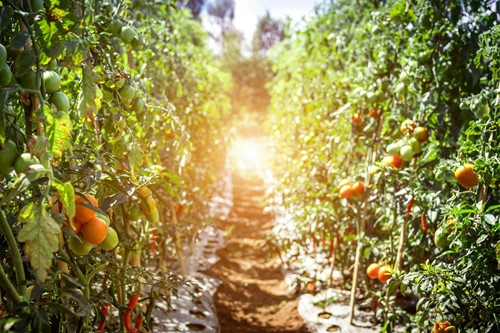
Companion planting is the practice of placing certain plants next to each other in your garden for various benefits. While some plants don’t play nicely together and should be planted far apart, others thrive in proximity with specific companion plants.
If you’re interested in taking your vegetable garden to the next level, here is some information about the benefits and applications of companion planting you should know:
Benefits of companion planting
Depending on the combination of plants, there can be multiple benefits to companion planting. Some primary benefits are:
- Shelter: Larger plants can protect smaller, more delicate ones from wind or harsh sun. Similarly, ground cover plants protect exposed soil to keep out pests.
- Attracting beneficial insects: Flowers can attract bees, butterflies and other pollinators to your garden to spread pollen and improve the overall health of the local environment.
- Improving the soil: Many vegetable plants affect the condition of the soil. Companion plants might improve the soil by adding key nutrients, or help retain moisture through their root systems.
- Improving flavor: Some plants can even affect the growth and flavor of certain foods grown in the same garden. Herbs like basil, mint parsley and lemon balm are known to improve the flavor and strength of tomatoes when used as companion plants.
- Pest control: One of the most important functions of companion planting is to protect vulnerable vegetables and other plants from pests. Companion plants can do this by either attracting insects to themselves as decoys, or by repelling them from the garden entirely with their scent.
Avoiding companion planting conflicts
While there are many beneficial combinations of companion plants to consider for your garden, there are also some plants you should keep away from each other.
Plants that attract the same kind of pest can leave both vulnerable to infestation. For example, tomatoes, eggplant, peppers and potatoes all have foliage hornworms love to eat. So, if you’re growing tomato plants, reconsider where you want them before planting near any of these other vegetable plants.
Another potential issue in companion planting is that some plants inhibit the growth of others by releasing certain chemical compounds into the soil. Fennel is one such plant, as are walnut and butternut trees.
It’s also important to follow planting guidelines for proper spacing. Making sure each plant has enough space to grow - both above ground and below - is paramount to a happy garden.
No matter what type of garden you have at home, knowing the basics of companion planting will benefit you and your plants.
About the Author

Patty Sehringer, L & L Realty Group
Welcome to L & L Realty Group! I am Patty Sehringer, your South Florida Real Estate Agent.
THE MARKET HAS SHIFTED and I want to put your minds at ease! This is NOT a bad thing for Real Estate! South Florida is just returning to a normal market.
The Real Estate Market may have shifted, but one thing that will NEVER change is that I will provide you with the professional representation that you deserve!
As a full-time Realtor since 1993, I am able to provide you with the knowledge and market insight to make your experience as smooth and pleasant as possible.
This website is just one tool for you to use in your efforts to purchase or sell a home.
SELLING? I will be happy to provide you with a FREE Market Analysis of your home! NO OBLIGATION!
BUYING? Now is the time! More homes are available that have reduced their asking prices significantly. I will keep you up to date on all the new listings that come available in the areas you are seeking!
I am a phone call away for ALL OF YOUR REAL ESTATE NEEDS!
Call Patty Sehringer, L & L Realty Group (954-328-5294) for immediate and professional service!
